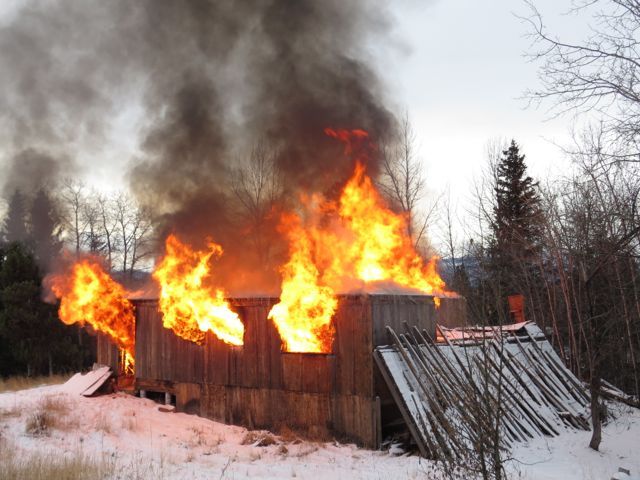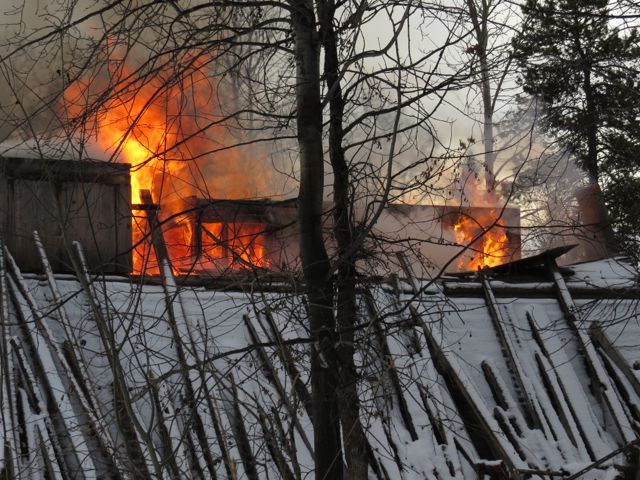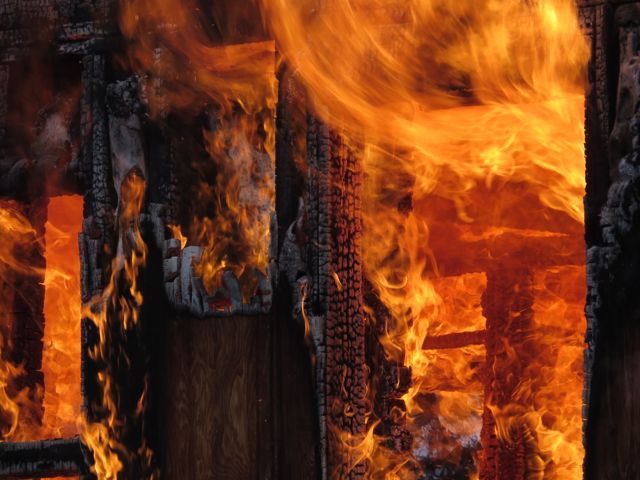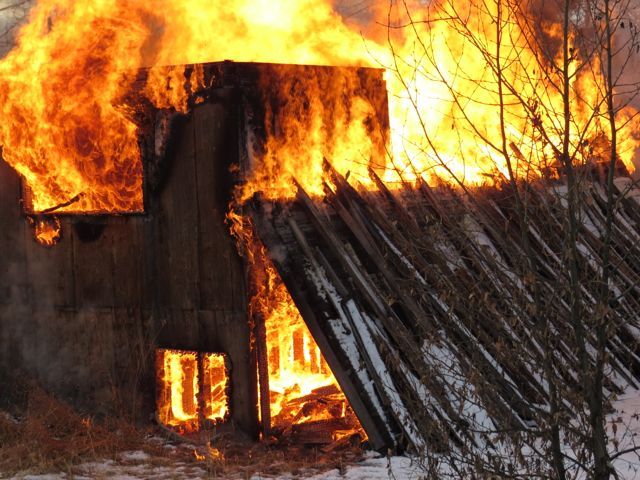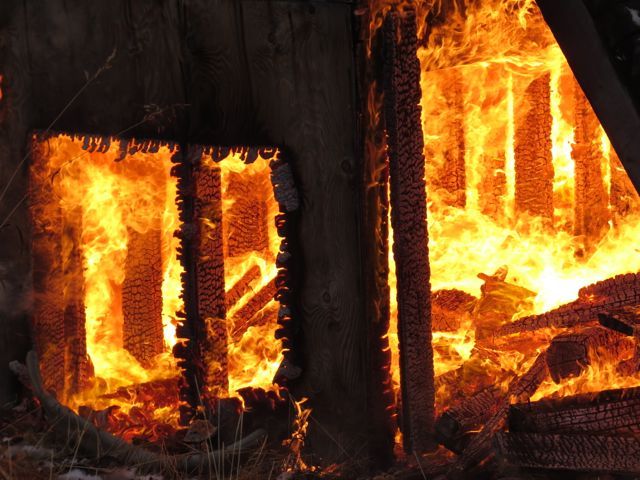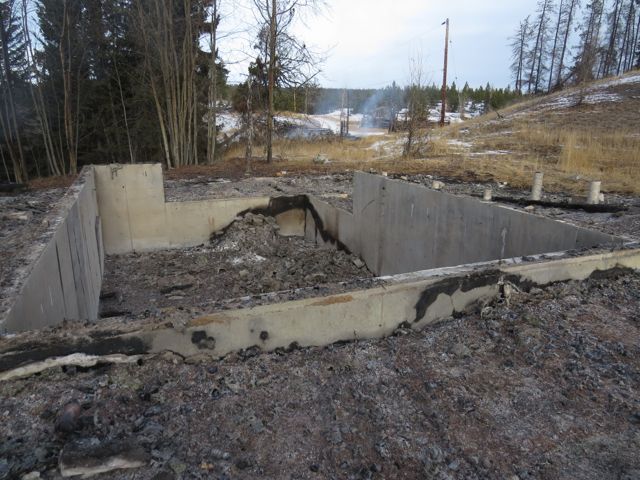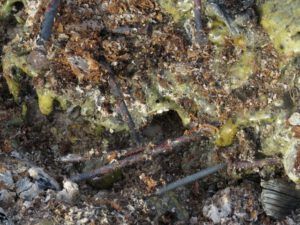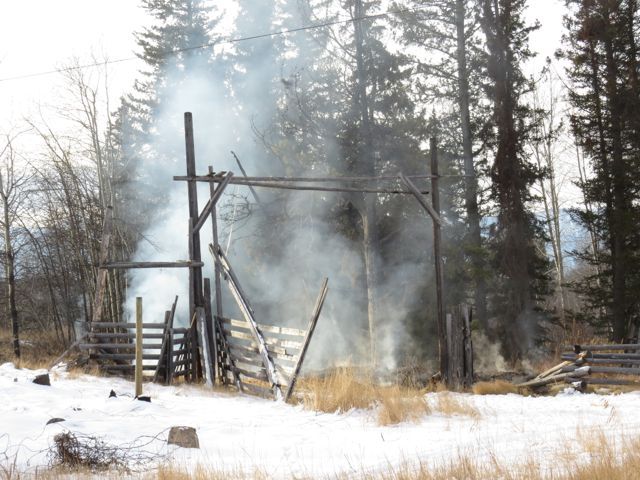I am writing two posts today and putting the second one up first so that they will be read in the correct order instead of backwards way on. So if you read this before I put part one up, try again in a couple of hours.
The packrat Palace and Jim and Joe’s barn, around 8.30am on Sunday November 24th. It is before sunrise on a gloomy morning so still half dark.
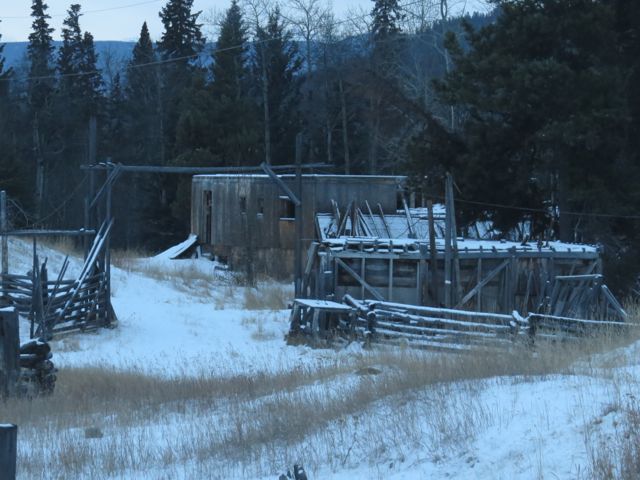 I carried in paper and dry kindling, and lit the first fire.
I carried in paper and dry kindling, and lit the first fire.
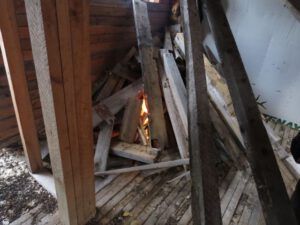 There were six fires inside and it took a little while for them to take hold. Then, suddenly, there was a great roar, and the building vomited flames.
There were six fires inside and it took a little while for them to take hold. Then, suddenly, there was a great roar, and the building vomited flames.
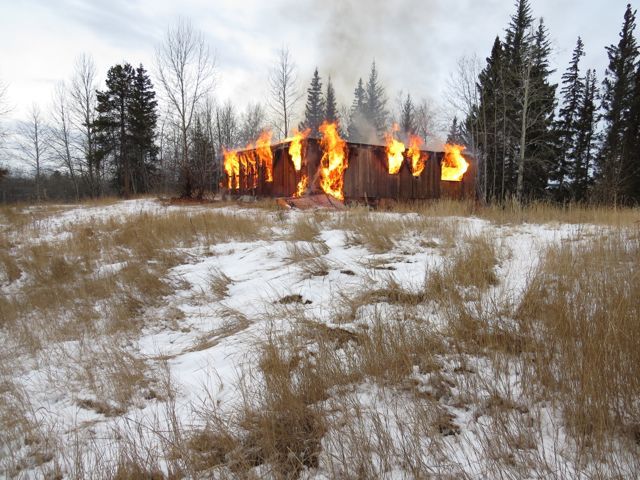 No picture can possibly describe the blast of heat, the horrifying deep-throated roar, and the scariness of the whole deal. If the wind got up and the fire decided to move out of its hoped-for boundaries, there would have been absolutely no way to control it. There’s no such thing as a voluntary fire service around here.
No picture can possibly describe the blast of heat, the horrifying deep-throated roar, and the scariness of the whole deal. If the wind got up and the fire decided to move out of its hoped-for boundaries, there would have been absolutely no way to control it. There’s no such thing as a voluntary fire service around here.
I found the abstract compositions fascinating. (Good job I had a long zoom on the lens!)
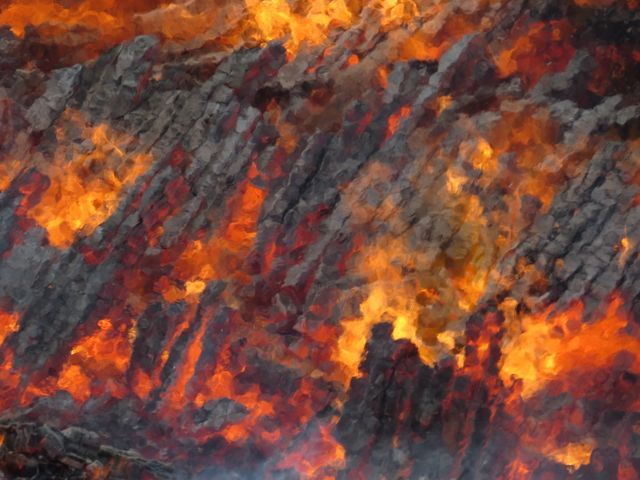 Within an hour, the building started to collapse.
Within an hour, the building started to collapse.
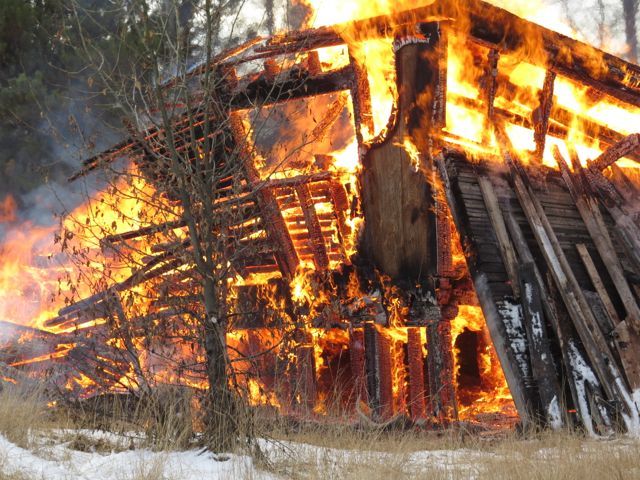 Often wind gets up later in the day, but it seemed to be staying calm, so we started the first fire in the barn. Because it was so close to the pole that holds my telephone line, however, I did not light all the burn piles at once, but let the fire travel round on its own.
Often wind gets up later in the day, but it seemed to be staying calm, so we started the first fire in the barn. Because it was so close to the pole that holds my telephone line, however, I did not light all the burn piles at once, but let the fire travel round on its own.
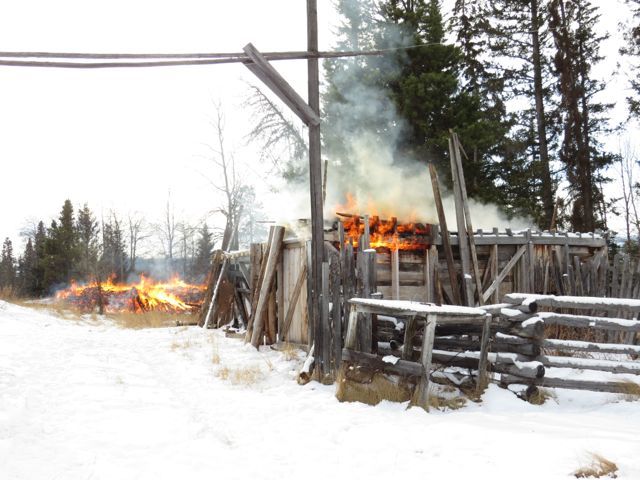 Of some concern was a big tree on the left back corner. I debated whether or not to cut it down – it would die no matter what I did – I was worried that it would set fire to the wall of spruce behind. But because the bank fell away steeply, this would not be a safe tree to fall so I let nature take its course.
Of some concern was a big tree on the left back corner. I debated whether or not to cut it down – it would die no matter what I did – I was worried that it would set fire to the wall of spruce behind. But because the bank fell away steeply, this would not be a safe tree to fall so I let nature take its course.
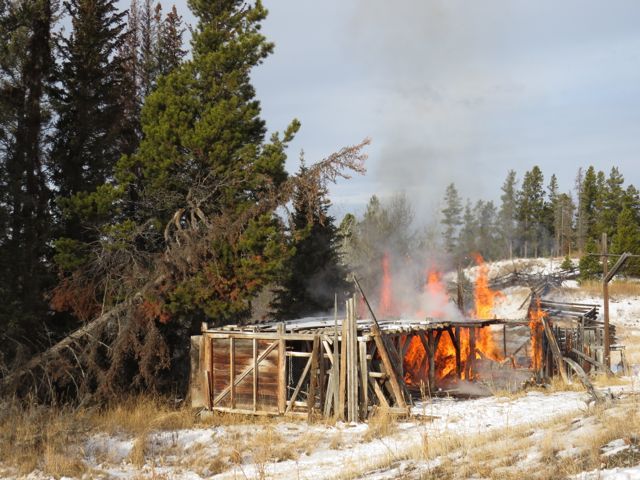 Slowly, the fire travelled around, then suddenly there was a roar like a rocket lift-off and the tree went up like a torch. This is how forest fires can behave – it was overwhelmingly powerful.
Slowly, the fire travelled around, then suddenly there was a roar like a rocket lift-off and the tree went up like a torch. This is how forest fires can behave – it was overwhelmingly powerful.
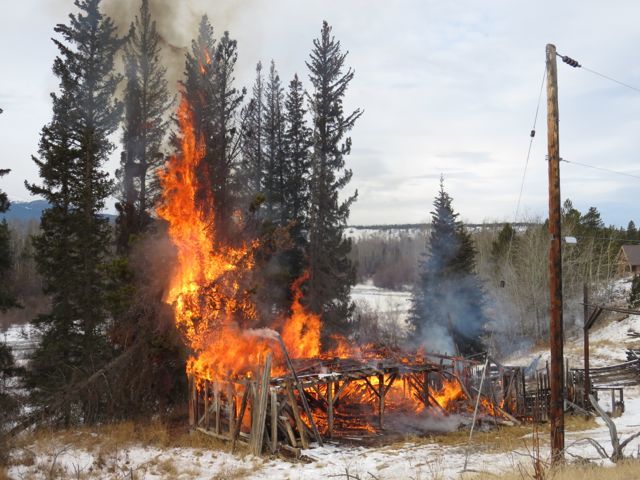 The packrat palace had now been burning for two hours. I had thought that pieces of the building might not be consumed and have to be either bulldoze or somehow chopped down in the spring. I need not have worried.
The packrat palace had now been burning for two hours. I had thought that pieces of the building might not be consumed and have to be either bulldoze or somehow chopped down in the spring. I need not have worried.
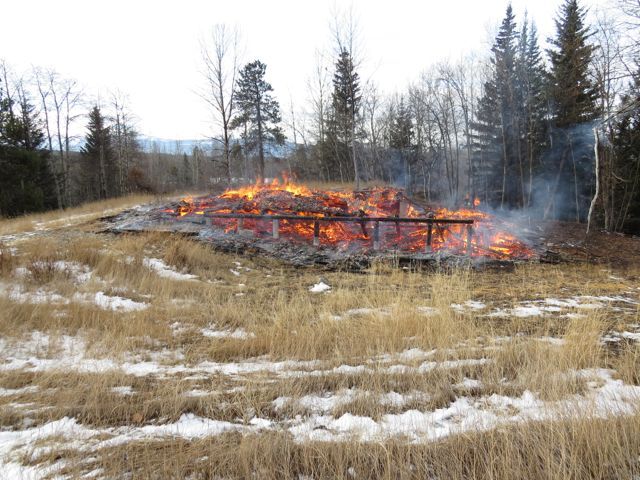 The tree torch flared twice but died down very quickly and the spruce were untouched. Soon the barn had also collapsed.
The tree torch flared twice but died down very quickly and the spruce were untouched. Soon the barn had also collapsed.
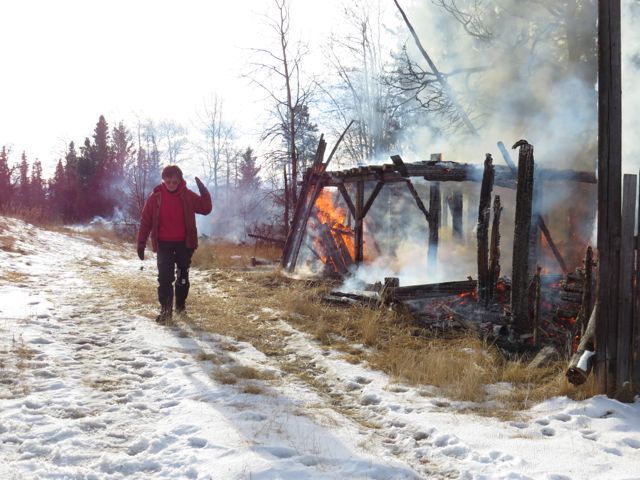 (That is Katie in the picture. She and husband Dennis came up from the Bella Coola valley to enjoy the fun.)
(That is Katie in the picture. She and husband Dennis came up from the Bella Coola valley to enjoy the fun.)
After lunch, there was very little left. Four hours after we started the fires, there was little but ash.
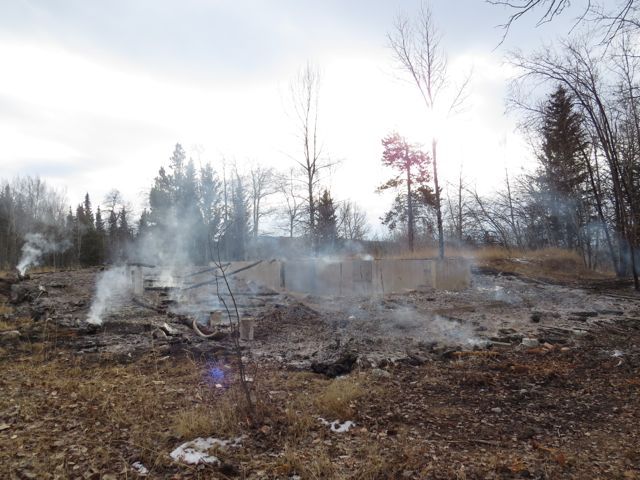 This morning I had a good view of the piles of burned fibreglass, now solid and clinking, interlaced with thousands of nails. A big clean-up job for volunteers in the spring (it is still too hot to get onto it now.)
This morning I had a good view of the piles of burned fibreglass, now solid and clinking, interlaced with thousands of nails. A big clean-up job for volunteers in the spring (it is still too hot to get onto it now.)
The barn will smoulder for a while as there were layers of old manure under the grass at the edges; it will be like a peat bog and burn until we get enough snow to put it out.

